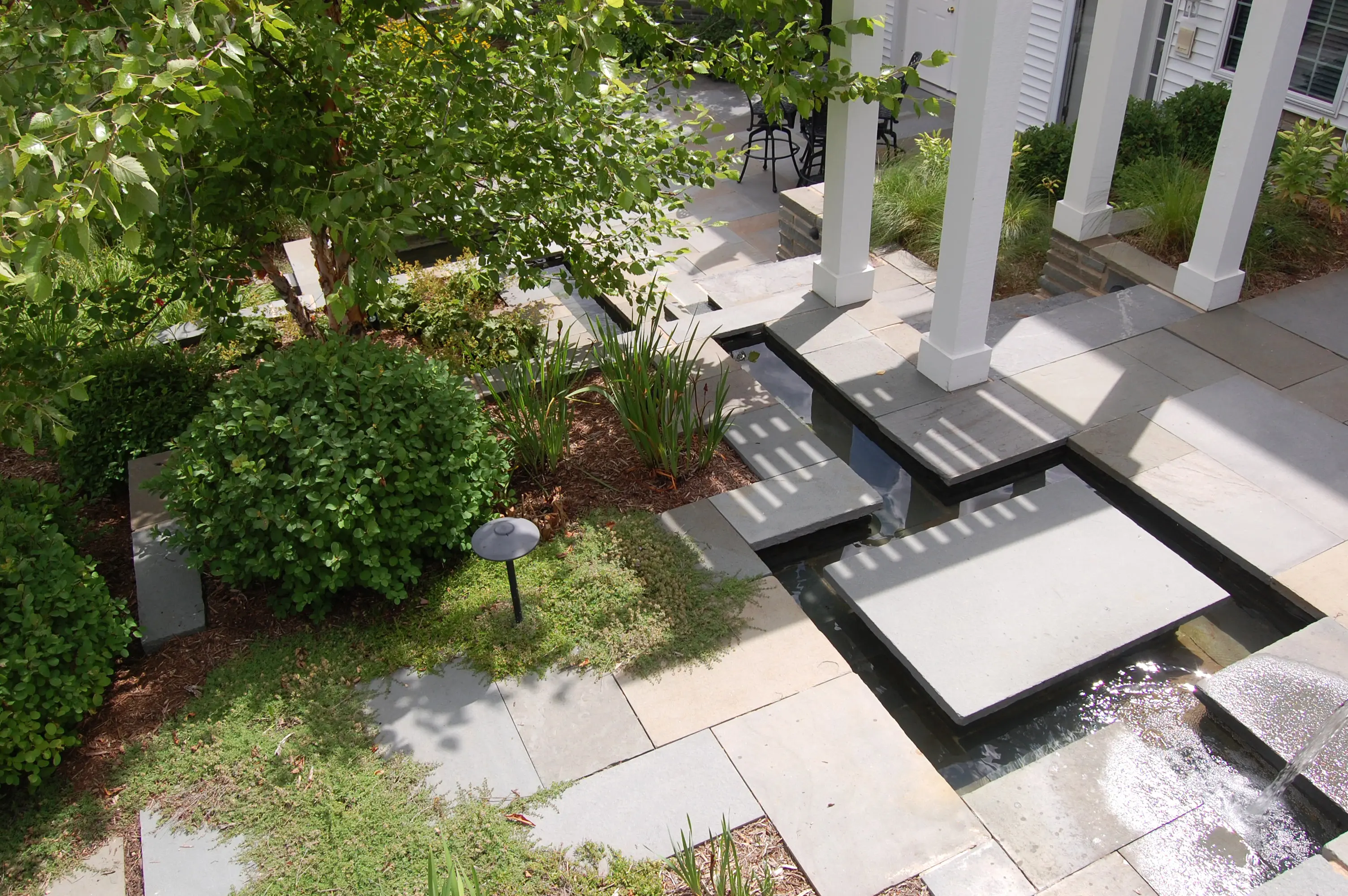
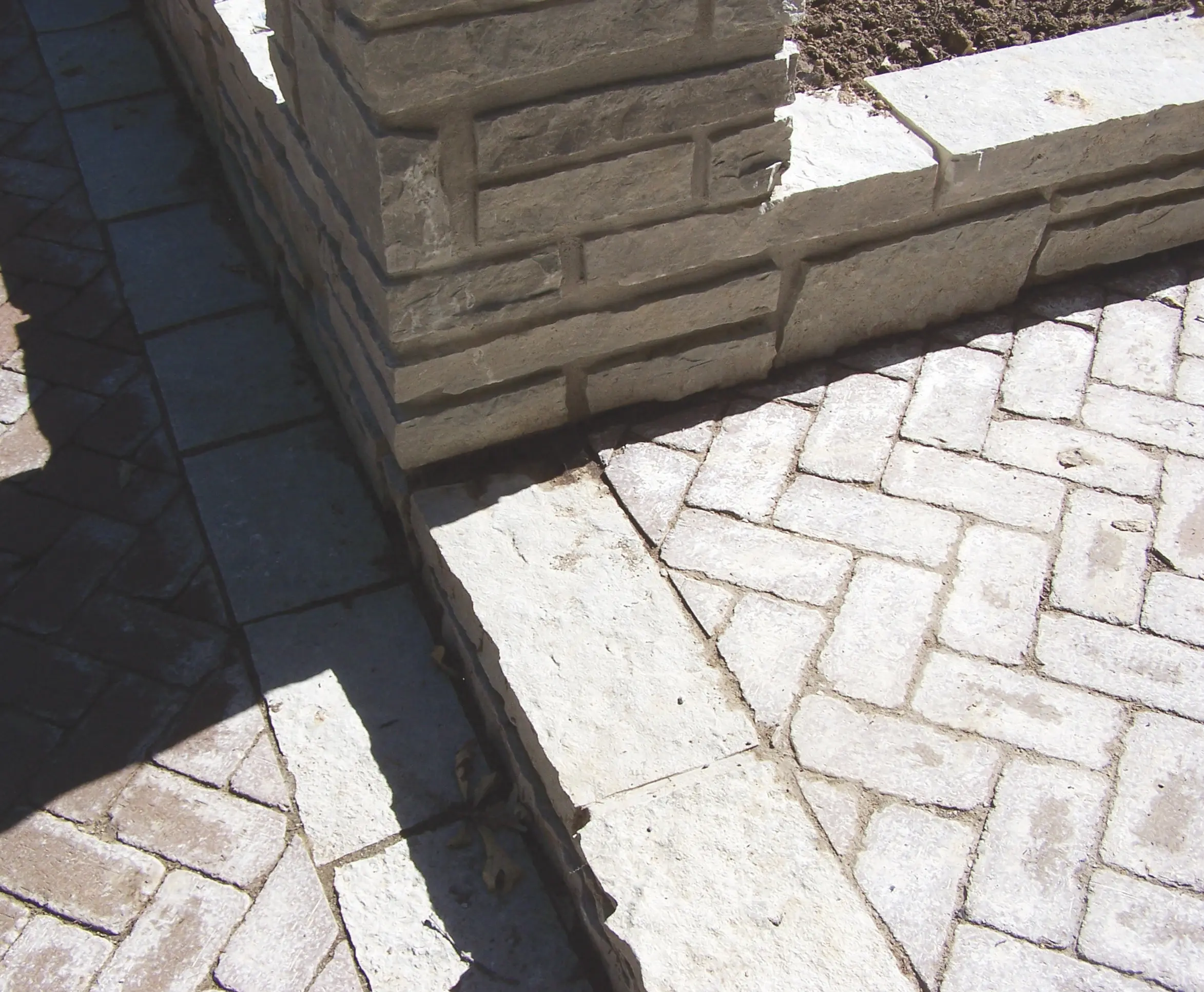
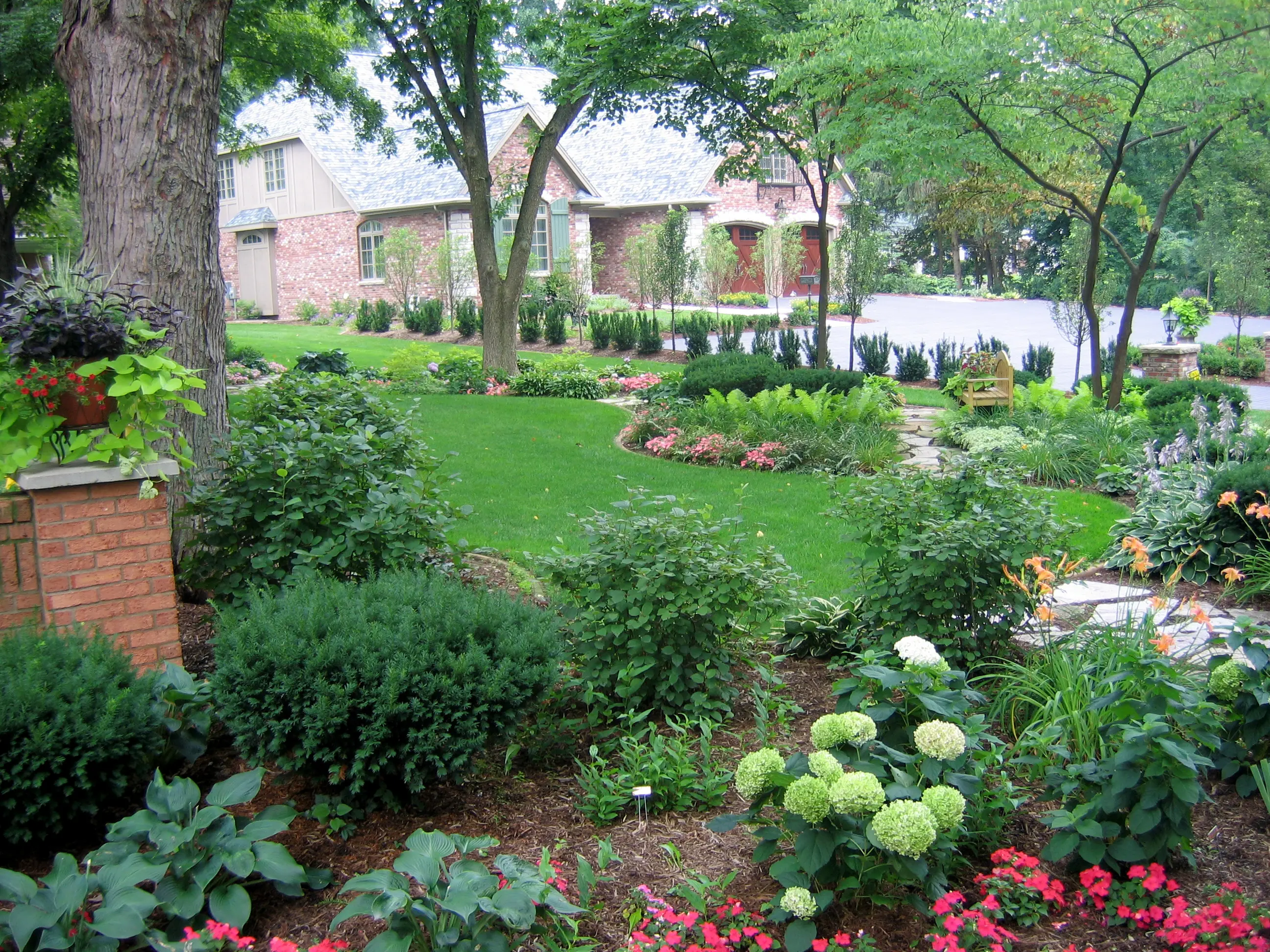
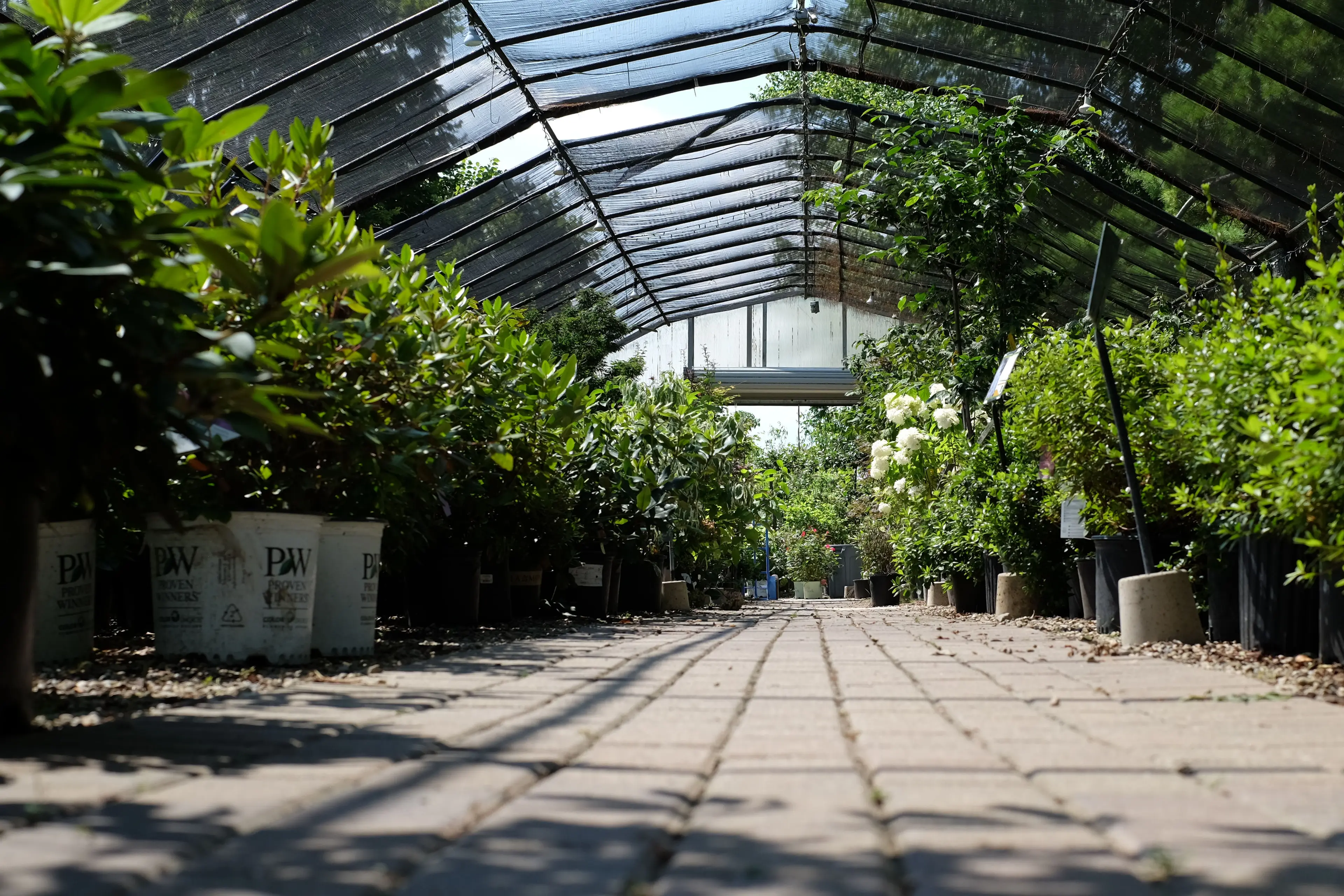
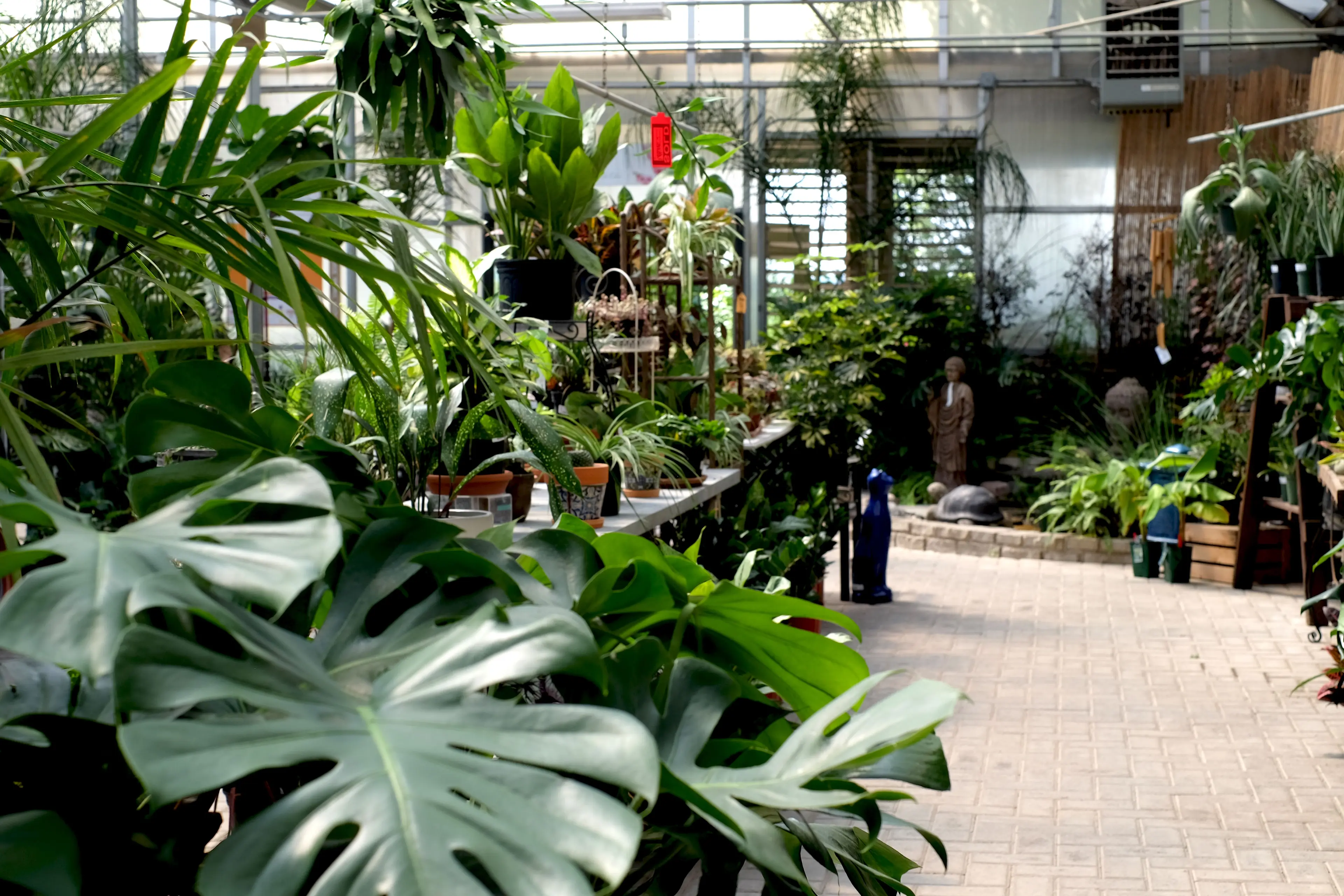
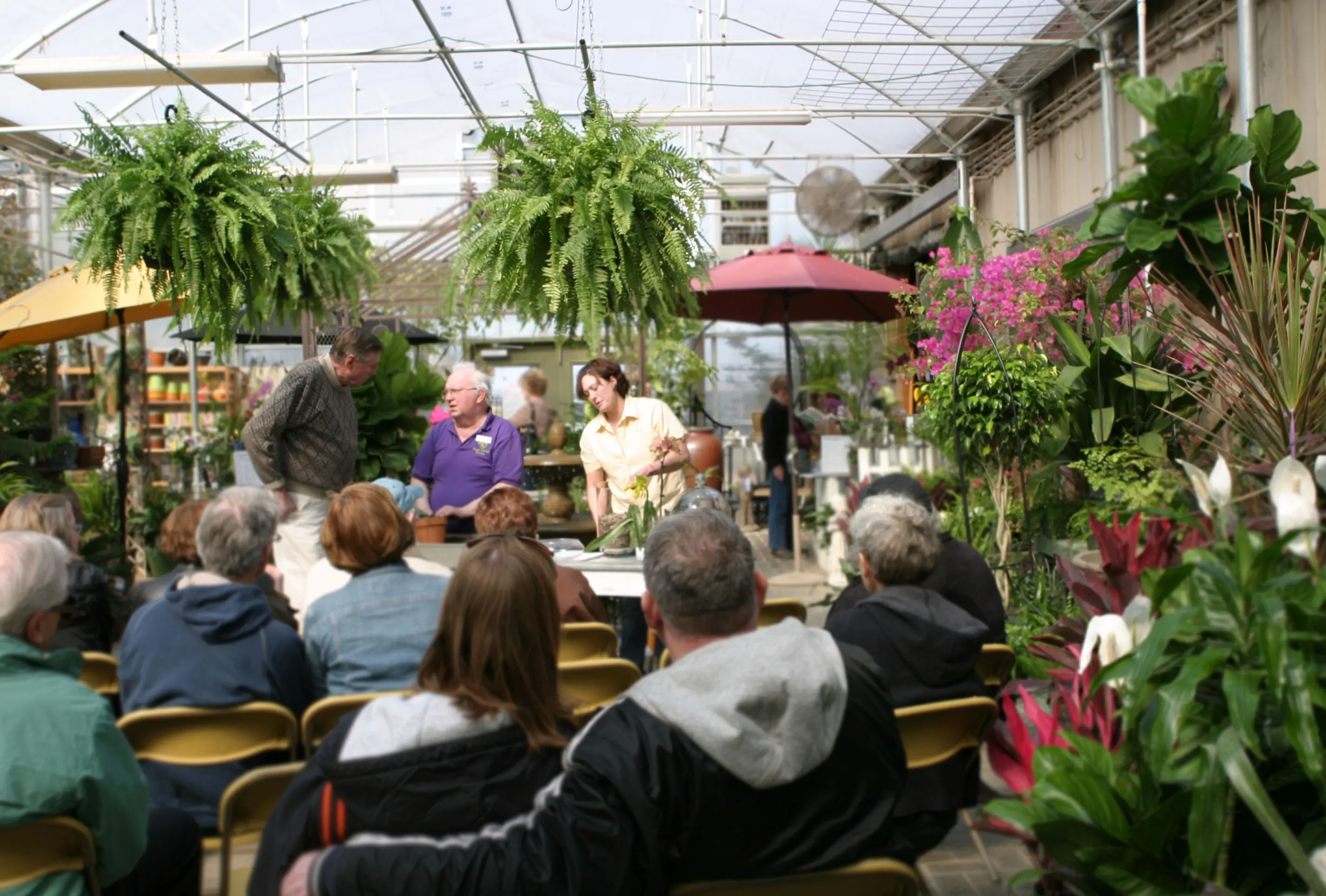
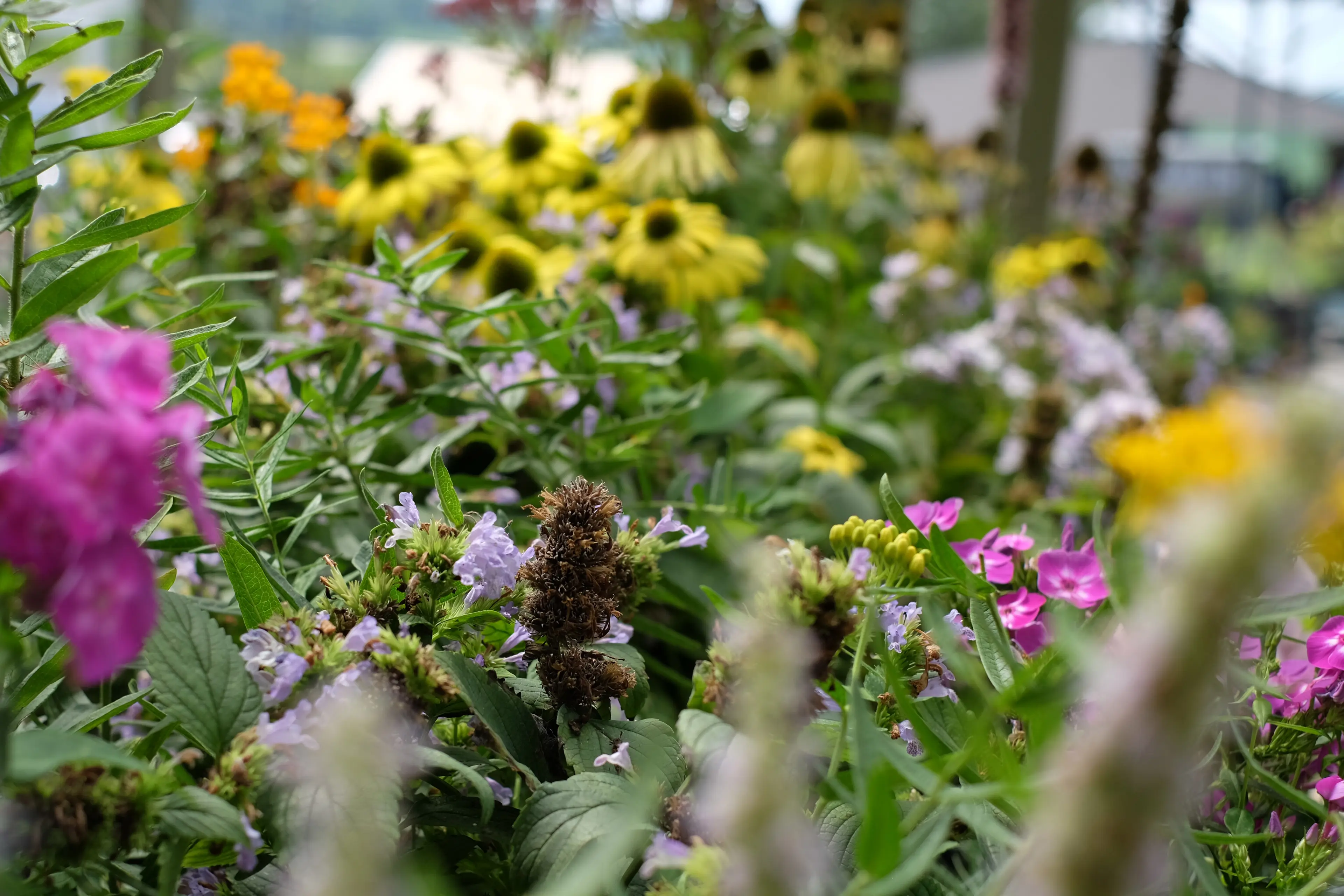

Garden Center
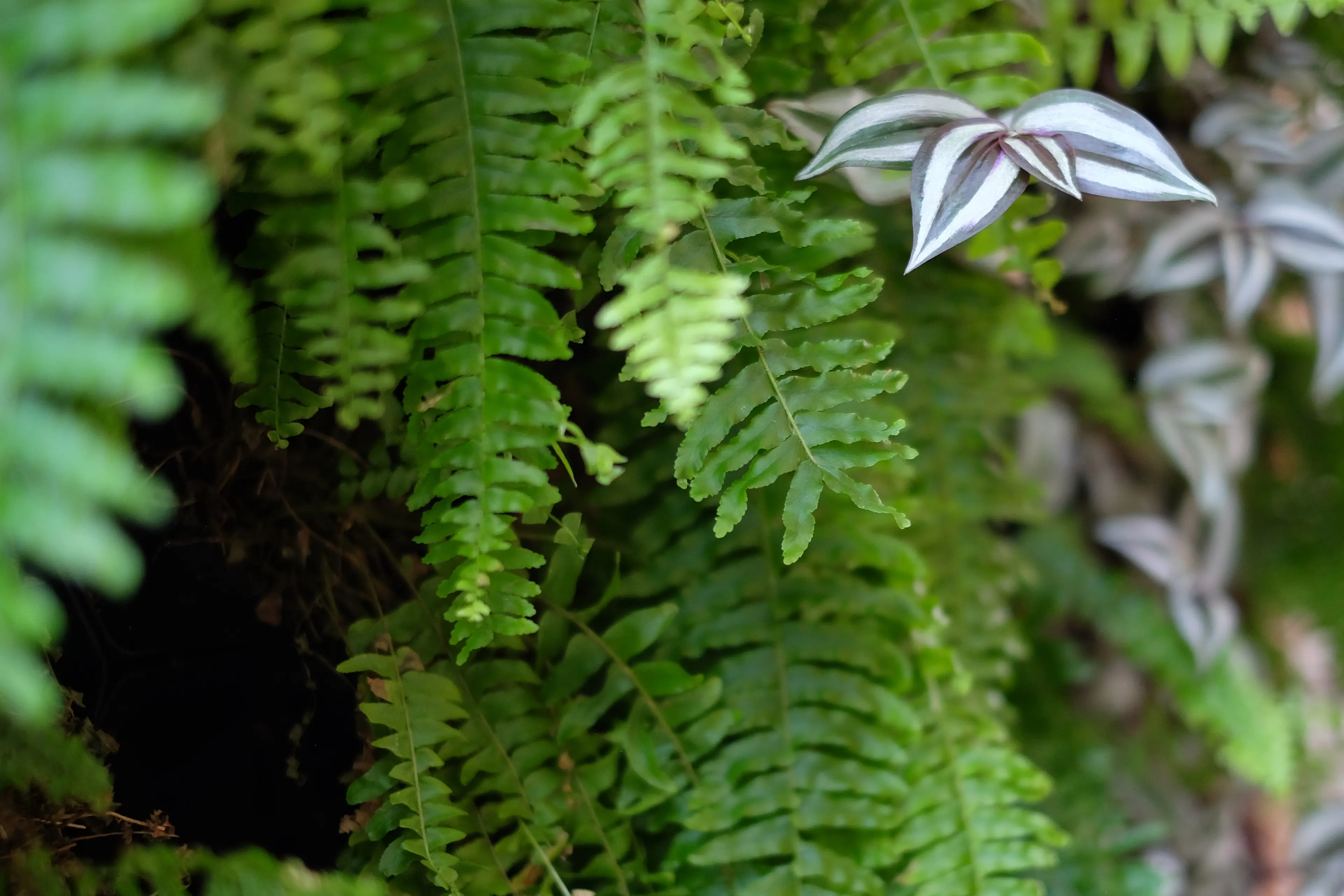
Countertop Composting, plus tips to regrow veggies and herbs from scrap!
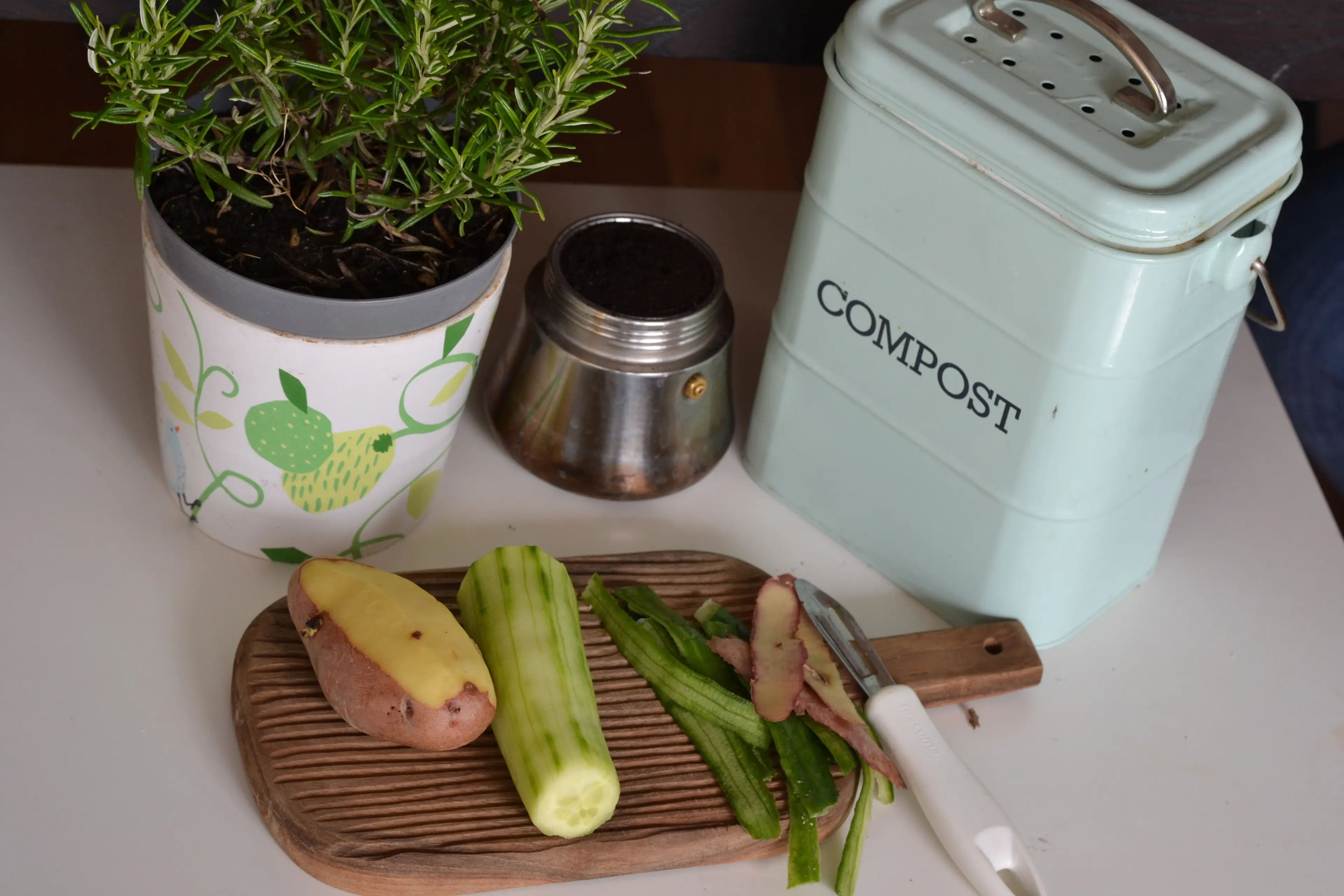
A quick guide to at-home composting
We could have called this blog post "how to make your own fertilizer" or even "how to grow soil," but nowadays, "composting" has more or less become a household term! In theory, composting is simple: you mix food scraps or coffee grounds (greens) with dead leaves or paper (browns), leave it to the elements, and over time the two will combine into a super-nourishing soil supplement. Good compost has a texture very much like a fresh bag of potting mix: dark brown, crumbly but moist, with a smell like freshly turned earth.
The uses for compost in the garden are virtually endless. When creating a new garden bed or rejuvenating an existing one, you should mix a few inches of compost into the tilled dirt. When repotting houseplants, raised beds, or annual planters, compost can be added to provide the macronutrients that help plants thrive season after season. When planting a new tree, up to 50lbs of compost should be added around the root ball to provide essential nutrients during the first couple of years of development, as well as condition compacted clay soil so that new roots can anchor themselves in. Before the winter chill sets in, a layer of compost should be spread over existing beds before mulching so that plants will have plenty of nourishment for their spring push.
Composting is a millennia-old practice designed to take food scraps and use them to refortify soil in which to grow crops the following year. Evidence of prehistoric humans using decomposed organic material to enhance soil has been dated to as early as 5000 BC.
During the holidays, when big meals are being prepared, there tends to be plenty of vegetable scraps going into the garbage bin. However, by using some of the composting tips detailed here, those scraps could be used to fortify your soil in the coming season.
How to compost indoors
There are plenty of countertop or under-the-sink compost bins on the market. You can purchase bio-degradable bags to house your scraps that sit inside these bins, almost like a miniature waste bin. One important thing to keep in mind is that you shouldn't rely on your countertop bin to actually facilitate the entire composting process; they are better suited for collecting scraps over the course of a day or two before transferring them to an outdoor compost heap or compost tumbler, or before setting the bag in your freezer. Composting relies on changing the physical state of your vegetable scraps via decomposition, and this can be a rather smelly process if it takes place indoors. Therefore, you should only keep scraps in your kitchen at room temperature for a day or two, tops. Then they should be transferred either outdoors or into a freezer, where the decomposition process is halted.
However, if you plan to start a compost pile in the spring, the easiest way to ensure a great start with plenty of green material is to keep your vegetable scraps in the freezer until the weather begins to warm. By designating a clear plastic container in your freezer or by tying off and storing your countertop bin's compostable bags in a designated freezer space, you can toss them right into your compost pile or into your turner in the spring (along with leaves you've raked out of beds, or shredded cardboard from Christmas-related shipping boxes), and get a jumpstart on the season!
If you don't have a compost pile or tumbler but are interested in composting, keep an eye on community needs for composting materials. Plenty of places such as organic vegetable farms, not-for-profit community gardens, educational programming via public and private schools, or possibly even a neighbor with a vegetable or herb garden would be happy to accept your food scraps and coffee grounds at the end of the winter chill! Social media platforms and community outreach forums are great places to start assessing interest in your neighborhood.
However, if composting isn't feasible for your situation and lifestyle, there are still ways to stretch the value of your holiday produce and fresh herbs. Many of these can be regrown using glass jars, tap water, and sunlight!
Regrowing Veggies and Herbs from Scrap
While veggies preserved this way aren't going to last forever, you can squeeze a few extra weeks worth of certain vegetables and herbs simply by propagating them in water. Some, like basil and mint, can even be reliably potted and set on a windowsill to continue growing until they can go outside in springtime.
Green Onions
Bundles of spring onions, also known as green onions or scallions, are a holiday meal ingredient, lending a light oniony flavor to dishes and serving as a bright garnish. Green onions are sold in bunches, bundled together with a rubber band, and with the root end intact. Since the roots aren't edible, they're usually tossed in the wastebasket without a second thought. However, you can supply your kitchen with fresh green onions for weeks by keeping your root tips and arranging them in a shallow dish, so the roots are submerged in clean tap water while the tops are raised above the water level.
New growth will continue to push from the center, and you can snip and chop these onion greens as you like to add some depth and flavor to dishes like scrambled eggs, baked potatoes, stir fry, casseroles, and plenty more!
Bonus: This method will also work for leeks and chives!
Lettuce
Any lettuce purchased as a 'head' or 'heart,' such as iceberg and romaine lettuces, can be regrown as well! New leaves will continuously emerge from the center as long as the root tip is submerged in clean water and they are kept in a relatively cool place.
Often you can stretch your lettuce to provide between an extra quarter- to half-pound of leaves! Once the head is spent, simply toss it in your compost bin.
Celery
The base of a celery heart can be grown in water in much the same way as lettuce heads. Simply make sure to cut the stalks off, leaving at least 2" of head remaining, and set it root-end down in a jar of clean water. New stalks will erupt from the core within the week!
Basil

A classic ingredient in appetizers like bruschetta, pesto, and Caprese salad, you may find yourself picking up some basil for non-traditional crowd-pleasers this holiday season. It can also lend a lovely, soft anise-like flavor to cocktails and other beverages.
Basil is notoriously easy to propagate in water. Simply pluck a sprig, making sure to leave 2-4 leaves intact at the top of the stem, and stick the bottom in the water. You will notice new leaves growing from the tip within days! Once large enough, continue to snip off new growth and stick it into the same jar. You can have virtually endless basil this way!
Mint
Ideal for roasted lamb dishes, countless holiday desserts, and a plethora of refreshing beverages, mint adds a wonderful freshness to a wide variety of holiday treats.
Mint is a notoriously explosive herb, and its creeping habit can easily overtake a garden bed if left unchecked. Some people, therefore, have found that the best place for mint is in containers. In the same fashion as basil, simply pluck all but the top few leaves from a sprig and allow the bottom to rest in clean water.
Oregano
Oregano is a classic Mediterranean herb, the leaves of which can be plucked straight from the stem and tossed into sauces, soups, marinades, rubs, and plenty of other savory applications.
Exactly as done with basil and mint, you should just select a sprig or two from your container and allow them to rest in a jar full of water. Once oregano takes root, it can grow surprisingly quickly, so keep an eye on the plant and add fresh water as necessary!